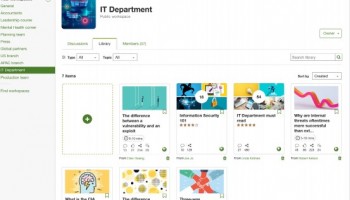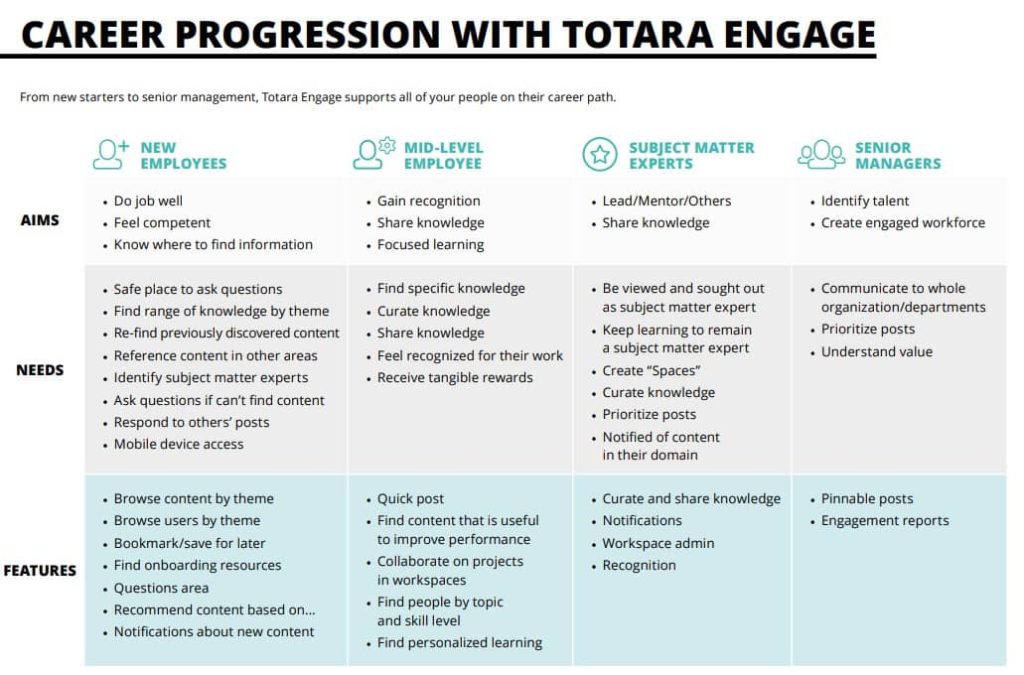Imagine you’re a Product Marketing Manager being bombarded with requests from sales, marketing, product, executive and help teams:
-
Sales: “Could you hop on a call to train us on the (XYZ) feature? It’s intriguing prospects who demo our product.”
-
Marketing: “We’ve created an SEO-focused page around the (XYZ) feature, and now the product team hates us. Will you review the copy and explain what’s gone wrong?”
-
Product: “Marketing has again misrepresented (XYZ) product feature! Sit down with us to create some training for them, please?”
Can you picture the plight of handling such complex demands without a collaborative online workspace to centralize, capture and distribute your product-specific knowledge to the teams that need it?
This scattered way of working is a scary thought.
But it’s just one of many examples showing how—with the rise of remote work and technical roles—poor virtual collaboration is rapidly becoming a reality for teams relying on the wrong software and tools.
Table of contents:
The missing tool for a collaborative online workspace
Cracking the code to virtual collaboration drastically enhances employee performance and business outcomes.
Mitchells & Butlers, a hospitality leader with over 44,000 employees, for example, achieved an 89% compliance rate and a 5% boost in quality scores by establishing an engaging collaborative virtual workspace .
Unfortunately, fostering a collaborative online workspace is challenging due to the narrow scope of commonly-used tools and the ever-expanding need for intense, team-based knowledge work.
Tools like Google Drive, Slack and Microsoft Teams certainly ease the project management-related challenges of working within large dispersed teams, but they aren’t designed to support the deep drivers of a collaborative virtual workplace.
Multiple singular purpose tools can’t act as a central space to facilitate and document key discussions, connect employees to subject matter experts and foster learning in the flow of work, because:
-
Critical conversations and ideas get buried between different channels and are hard to capture. This thwarts productivity and team-based problem solving
-
Subject matter expertise isn’t captured, shared or made accessible to employees across the organization. As a result, demands on internal experts increase and guidance for non-expert employees (that’s specific to job roles/skills) becomes less efficient and effective.
-
Personalizing learning around the needs of individual employees (and their job roles) becomes difficult to scale, especially in larger organizations
This is where an internal workplace collaboration tool like the learning experience platform (LXP) comes in.
In this post, you’ll learn how to address the aforementioned limitations with an LXP to significantly improve employee communication, problem-solving capabilities and productivity.
Centralize your collaborative online workspace with an LXP
Complex operations require intense collaboration that combines expertise from multiple departments.
If you’ve got a new product launch, for instance, constant communication between your product, management, marketing and design teams is a given.
As the intensity and cadence of communication increases, however, the quality of collaboration drops as critical feedback, ideas or documents —that bounce between multiple channels, departments and tools—get overlooked or lost.
This hinders teamwork, disrupts communication and slows down work processes.
An LXP like Totara Engage (which is a single component of the Talent Experience Platform), solves this common problem with permanent virtual workspaces for deep collaboration.

Giving employees a dedicated space to work together, workspaces are used for teams, departments, roles and learning cohorts to discuss projects, processes and problems.
This is especially useful for larger organizations, dispersed teams and technical projects/training because workspaces become exponentially valuable with time as more people contribute and share knowledge.
The beauty of workspaces is that teams can tailor them around their own unique collaborative needs and projects. They’re suited for shallow interactions (e.g. to post and respond to ideas, or to vote in polls to decide on a course of action), but are perfect for complex tasks and projects:
-
Wikis help employees independently troubleshoot and self-serve issues
-
Forums document deep discussions, facilitate valuable team brainstorming, stimulate new ideas and enable peer reviewing
-
Surveys help efficiently capture ideas and sentiments from large groups of people
-
Content playlists can be assigned to foster continuous learning and upskill employees on specific subjects or competencies
-
Badges and labels gamify knowledge sharing, reward subject matter experts and recognize frequent contributors
Allot subject matter experts to expedite problem-solving
From brand-new employees to experienced senior management, an LXP connects people with similar needs—whether that’s by role, location, seniority level or skill set.
Not only will this help your people fill skills/knowledge gaps created by corporate elearning, collaborate on projects from a centralized collaborative virtual workspace and communicate with colleagues, but it also opens up the opportunity for developing employees to be mentored by senior experts.
Experts can curate training resources from multiple channels to create personalized development paths and answer questions from mentees—who can comment on and rate content created by others.
This provides employees a dedicated place to develop their skills, discuss ideas with colleagues and solve problems together in an engaging and interconnected way. It even aids career progression.

Recognize and reward frequent contributors
Subject matter experts play a crucial role in collaborative workspaces. Other employees will turn to them for advice and guidance, and they can help complement formal learning programs in your learning management software.
That’s why it’s important to recognize subject matter experts, and employees in general, for helping team members and sharing knowledge.
With an LXP, employees can be recognized as experts or valuable contributors with tools such as ratings, labels and badges to identify top-performers and motivate employees to help each other.






